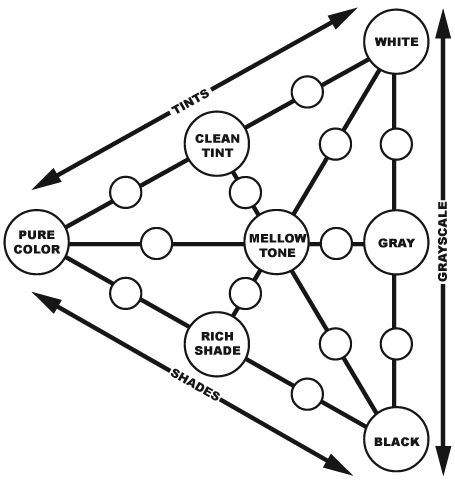Once Newton had separated white light into its spectral color components,
he then tried to split each color further using similar methods and
soon found out that he was unable to break them down past the initial
separation. These colors have since been described as Pure Color.

The Faber Birren Triangle describes alterations made to Pure Color by the addition of Black, White or Gray (Black and White).
When White is added to a Pure Color you create a Tint of the color. For example, Pink is not a Pure Color, but a Tint of the Pure Color we call Red. A near-equal mix of the Pure Color and White produces a Clean Tint of the color.
When Black is added to a Pure Color you create a Shade of of the color. For example, Maroon is not a Pure Color, but a Shade of the Pure Color we call Red. A near-equal mix of the Pure Color and Black produces a Rich Shade of the color.
When varying levels of Gray are added to a Pure Color you create a Tone of the color. Tones are soft, muted, grayed-back versions of the Pure Color. They are less saturated than the Pure Color itself, less vibrant, more somber and relaxing than the Pure Color. Equal amounts of the Pure Color and Gray produce a Mellow Tone of the Pure Color.
When the saturation of a color reaches zero, all you are left with is Gray. The level of the Gray exists somewhere between White and Black and the range is often refered to as the Grayscale.